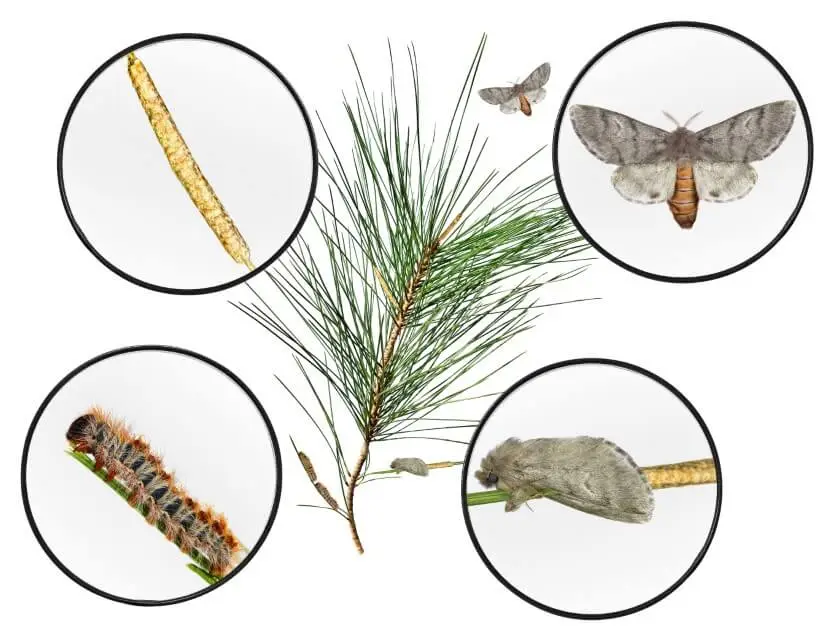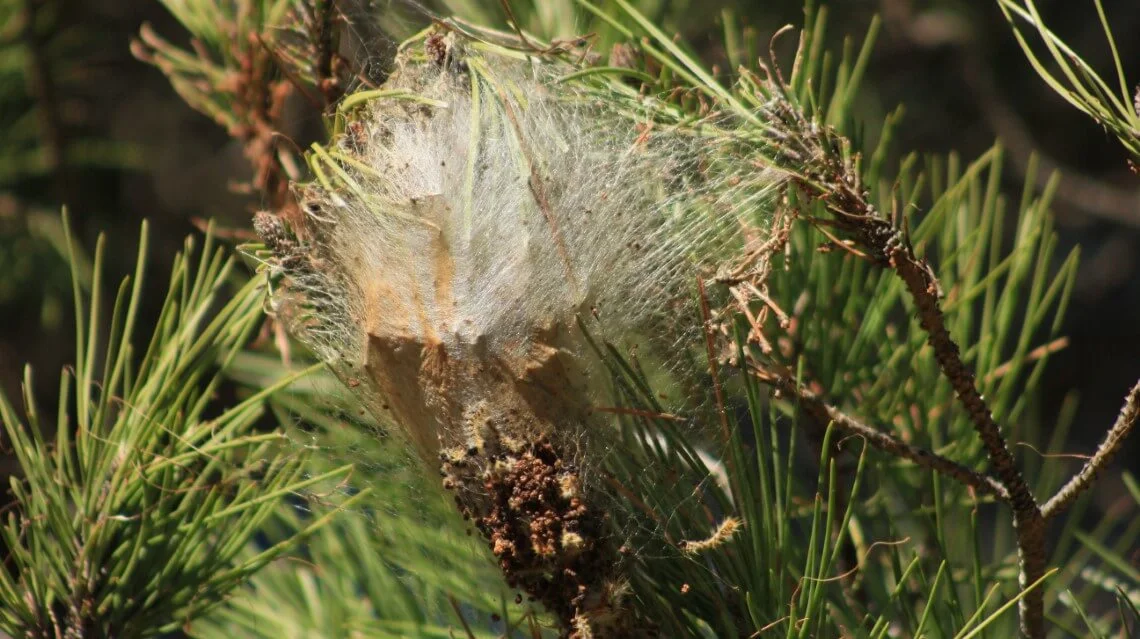Different types of pests in urban gardens
What types of pests in urban gardens are active in Portugal? And how to fight them? Whether in the orchard, vegetable garden or forest, plants are subject to different pests. It may be necessary to resort to professional intervention, like, for example, control pest of the pine processionary.
But there are also other insects, birds, fungi, bacteria and other organisms capable of causing damage to trees, people and domestic animals. If they are not treated in time, they can lead to huge economic losses.
Learn how to proceed and call Truly Nolen for processionary worm disinfestation or other effective pest control.
Get in touch with Truly Nolen! 800 20 20 50 (Free) or by email: This email address is being protected from spambots. You need JavaScript enabled to view it.
The pine processionary
According to the Institute for Nature Conservation and Forests (ICNF), the processionary goes through four stages: egg, caterpillar, pupa and adult insect.

The pine caterpillar is one of the main types of pests in urban gardens. In the early stages, before winter, they feed during the day and remain at night in temporary nests. Then, they develop urticating hairs and form silky nests. At the end of winter, they descend in procession and bury themselves in the ground to pass the butterfly. In summer, they start flying after dusk.
Special care must be taken with the urticating hairs that this species of caterpillar leaves on pine trees and other trees, not only in the forest but also in schools and gardens. The hairs are responsible for severe allergies in people and animals, causing irritations to the skin, eyes and respiratory system.
Although the pine caterpillar is more dangerous in the processionary phase, with winter already coming to an end, vigilance, prevention and pest control must be constant throughout the year. The behavioural changes of the species depend on numerous factors, including climate, food abundance and the presence of other organisms.
How to know if the trees are affected by the Processionary Forest?
- The pine trees show some symptoms that indicate the presence of this pest;
- The needles gnawed by the larvae become dry and reddish in colour, with signs of fine droppings at the base;
- The branches may display silken nests at the extremities;
- The attacked trees may suffer from delayed growth, loss of vigour or even death.
Invasive species in Portugal
In recent decades, many invasive species have attacked the most frequent native plants and trees in Portugal. As of 2018 alone, at least 18 species of insects have been introduced into Europe in recent years, with the increased risk of 16 more species of insects and mites, fungi and other organisms, reports the European and Mediterranean Plant Protection Organisation (EPPO)..
The increase in average temperature, the occurrence of extreme climate phenomena and changes in precipitation are factors that influence the distribution and increase of pests and diseases affecting the forest, reinforces the Instituto Nacional de Investigação Agrária e Veterinária (INIAV). Pine, eucalyptus, oak and chestnut trees have been greatly affected, along with various agricultural crops and ornamental plants.
Often, the damaging action of these exotic species on plants is only visible when it is too late. The symptoms can take several years to manifest themselves, with the trees becoming weakened from within as the infestation spreads. That's why early prevention and treatment is so important.
New insects, fungi, bacteria in Europe and types of tree they attack*
Insects
- Anoplophora chinensis (Asian beetle) - leafy trees
- Dryocosmus kuriphilus (Chestnut gall wasp) - chestnut trees
- Gonipterus platensis (Eucalyptus weevil) - eucalyptus
- Thaumastocoris peregrinus (Tanning bug) - eucalyptus
- Rhynchophorus ferrugineus (Palm beetle (or red palm beetle) - palm trees
- Leptoglossus occidentalis (Pinecone sucker) - pine trees
Fungi
- Fusarium circinatum (Resinous pine canker) - pine trees
- Hymenoscyphus pseudoalbidus (Withered ash) - ash trees
- Phytophthora ramorum (Sudden oak death) - oak trees
Bacteria
- Xylella fastidiosa – various species, including lavender, olive, grapevine, almond, orange and lemon trees
*Fonte: European and Mediterranean Plant Protection Organisation (EPPO)..
Back

